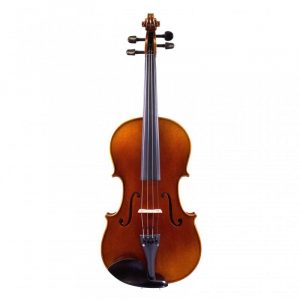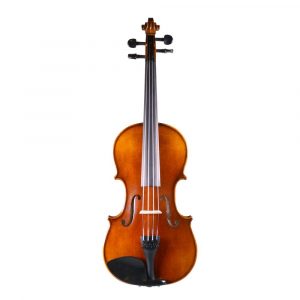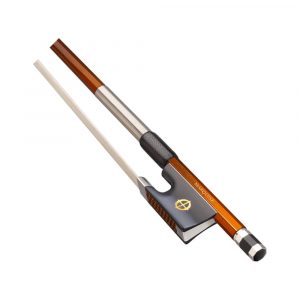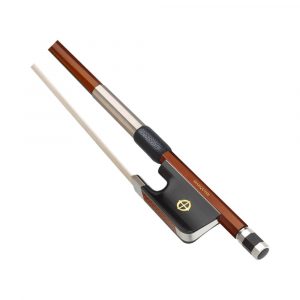Violin vs. Viola: what instrument to choose
The violin and viola look very similar at first glance — so much so that beginners often have difficulty differentiating them, especially if they are not arranged side by side. Indeed, apart from the fact that the violin and viola are both members of the stringed instrument family along with the cello and double bass, there are many other similarities between the violin vs. viola: They are held and played in the same position resting on the shoulder, they have the same number of strings, they are tuned by the same principles, they have a similar shape and construction, and the sound is produced by moving a bow across the strings. Despite these similarities, however, there are also several key differences between the two instruments that enable them to coexist harmoniously in an orchestra and compliment each other perfectly. Below, you’ll find a comprehensive explanation of the key differences between these two classic instruments.
Violin vs. Viola: Sizes
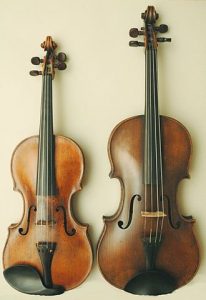


Violin measurements
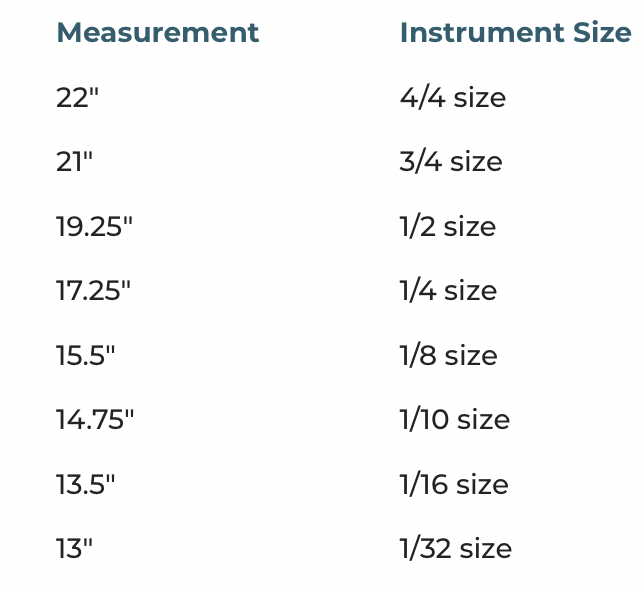

Viola measurements
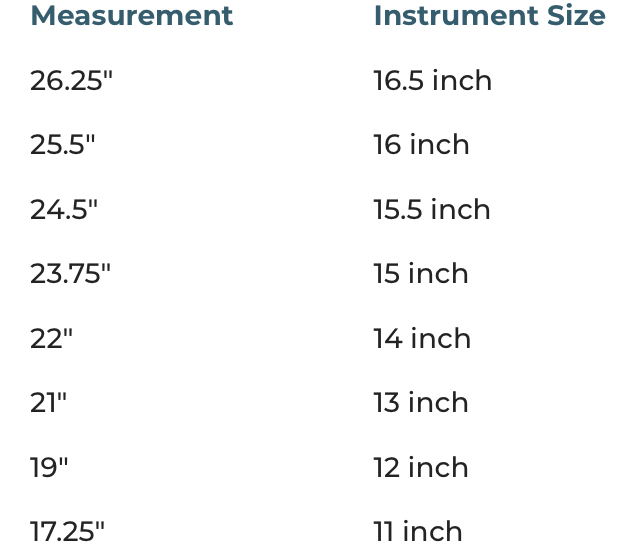

As you surely noticed in the image above, the first and most obvious difference between the two instruments lies in their overall size, length, and weight. While a full-sized violin will typically measure 36cm or 14 inches from tailpiece to scroll, a professional viola for adults is considerably longer, measuring about 42cm or 16 ½ inches in total. Due to this extra length, violas contain more material and mass than violins, resulting in more weight. Generally, violas weigh about 580 grams compared to about 460g for violins. While these differences in length and weight may seem small, in fact they can add up to a significant amount of extra strain on the arm and shoulder of the musician while playing over time, which means that violists must make an adjustment to their posture compared to violinists in order to avoid any strain or potential injuries
Finger positioning
As a result of the greater size and length of the viola, the fingers of the player will also be positioned differently while playing. In general, because the neck of the viola is longer and the fingerboard is wider than a violin’s, the distance between the strings is also wider, requiring greater dexterity, effort, and strength from the left hand and fingers while playing. Furthermore, the strings themselves are also thicker and therefore require slightly more downward force from the fingers to produce each note, and the additional chord length means that your fingers and hand will need to travel more distance up and down the fingerboard when transitioning between chords. This is to say that the distance between notes on the viola is greater than on a violin.
Violin vs. Viola: Strings
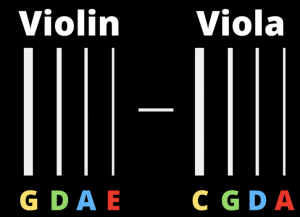

Although the classical viola and violin each contain four strings, they are very different — not only in their length and thickness, but also in their scale. As mentioned in my previous article, E is the sharpest or highest note produced by the thinnest string on a violin, followed by A, D, and G, which produces the lowest or deepest sound. By contrast, the strings of a viola, from highest to lowest, are A, D, G, and C. Just like a violin, the strings of a viola are tuned in fifths — but exactly one octave lower than a violin. This means that the violin and viola share three strings in common — A, D, and G — while the lowest note of the viola, C, is exactly one octave above or higher than a cello.
Violin vs. Viola: Sound
Because of the viola’s larger size and strings, it consequently produces a lower and darker sound, often described as softer, rounder, more mellow, more velvety, and richer in the upper and middle registers. Generally, because the viola occupies the middle register of the string family of instruments, its role in the orchestra is to double the melody of the violin while also picking up the bass of the cello. Essentially, the viola provides the important bridge between the higher, sharper notes of the violin and the lower tones of the cello and bass. Moreover, as violins generally have a greater presence in most orchestras due to the fact that they are the only instrument with two sections, violas are usually outnumbered two to one by violins. For this reason, the musical repertoire is much greater for violins, which is why many great composers throughout history have given the violin a prominent place in their compositions. As such, the violin generally carries the melody of a symphony orchestra, while the viola plays the important but more understated role of accompanist, bridging the tonal gap between the higher and lower string instruments.
Viola vs. Viola: Bow
As the length and size of the viola is greater than the violin, the viola bow will also be longer and therefore heavier. The reason for this difference in weight is due to the fact that the thicker C string on the viola requires more friction and weight to produce a balanced sound. A common mistake that new musicians make is unknowingly buying a violin bow for a viola and vice versa. The problem with this is that because the strings are thicker and heavier on a viola, they require a thicker and heavier bow to produce the proper sound. The difference in weight between the bows (about 10 grams heavier for the viola) may seem negligible or even unnoticeable upon initial inspection, but the extra weight can make it more difficult to play quickly — especially on the E string — and lend less control overall. For this reason, it is never recommended to use a viola bow on a violin. If you find yourself unable to feel the weight difference between the two bows, just look at the frog: a violin bow’s frog will be more pointed, while a viola bow will have a more rounded shape.
Viola vs. Viola: Key


Another important difference between the viola and violin is the key that they are played in. While violins are played in the treble clef and violas can also play in this key, the viola is unique in its use of the alto clef, also known as the C clef. For historical reference, the alto clef was used extensively during the Baroque period of music, but in modern orchestras the alto clef is rarely used by instruments other than the viola. This is to say that the alto clef is exclusive to the viola, which means that musicians who want to make the transition to the viola from other instruments like the violin or cello will need time to adjust to reading their sheet music in this different key.
Violin vs Viola: Fitting
As with the violin and stated in my previous article about fitting, the viola is fitted for each individual player by extending the left arm out to the side, parallel to the ground, and measuring the distance between the side of the neck and the palm of the hand. To be an appropriate fit for an adult-sized viola, the player’s arm measurement must be at least 67cm, which corresponds to a full 16” instrument. By contrast, a full-size violin requires a minimum measurement of 60cm. Additionally, the way we label the different sizes of the instruments is also unique: while violins are referred to in fractions (4/4, 3/4, 1/2, etc.), viola sizes are labeled simply by their length in inches (16 ½”, 14”, 13″, etc). If you are able to visit a music shop and compare the different sizes of both instruments side by side, you’ll find that a full 4/4 adult violin is roughly the same size as a 14” violin. Because of this, for younger players who want to play viola, it is possible to choose a violin of the same size and convert or transform it into a viola by replacing the violin strings with viola strings. While not exactly the same, this conversion will at least allow the student to become familiar and comfortable with the weight and tension of the viola strings, the stronger touch and effort required to produce the proper sound, and the slightly different finger and bow techniques. Later, once the student has grown and is better able to bear the weight and stress of a real viola, the transition will be much easier and more natural. In any case, it is worth repeating that any student of any age who attempts to play an instrument that is too big for their frame will experience greater stress, fatigue, and frustration while playing, which is why I always recommend to my students and parents of my students that they take the appropriate measurements during the fitting process and choose the right instrument in relation to their size.
Final thoughts
So now that you understand the differences between the violin and viola, you’re ready to go to your local music shop and try out the instruments for yourself. Keep in mind as well that because the two instruments are very similar in structure and technique, it is relatively easy to transition between playing both of them in the future.
More about:
Violin fingering- G string pinkie placement- read here
Violin E string notes- read here
How to hold a violin bow for beginners- read here
Vibrato on violin: How to do it effortlessly
I would love to answer any questions related to violin lessons and violin playing. You can email me at [email protected] or book your free trial lesson here.

